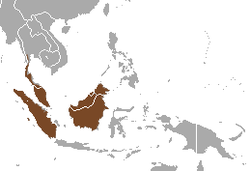| Hemigalinae | |
|---|---|
 | |
| Banded palm civet (Hemigalus derbyanus) | |
| Scientific classification | |
| Kingdom: | Animalia |
| Phylum: | Chordata |
| Class: | Mammalia |
| Order: | Carnivora |
| Family: | Viverridae |
| Subfamily: | Hemigalinae Gray, 1864 |
The Hemigalinae are a subfamily of the viverrids denominated and first described by John Edward Gray in 1864. [1] Hemigalinae species are native to Southeast Asia from southern China through Indochina, Malay Peninsula to Sumatra, Borneo and Sulawesi. [2]









